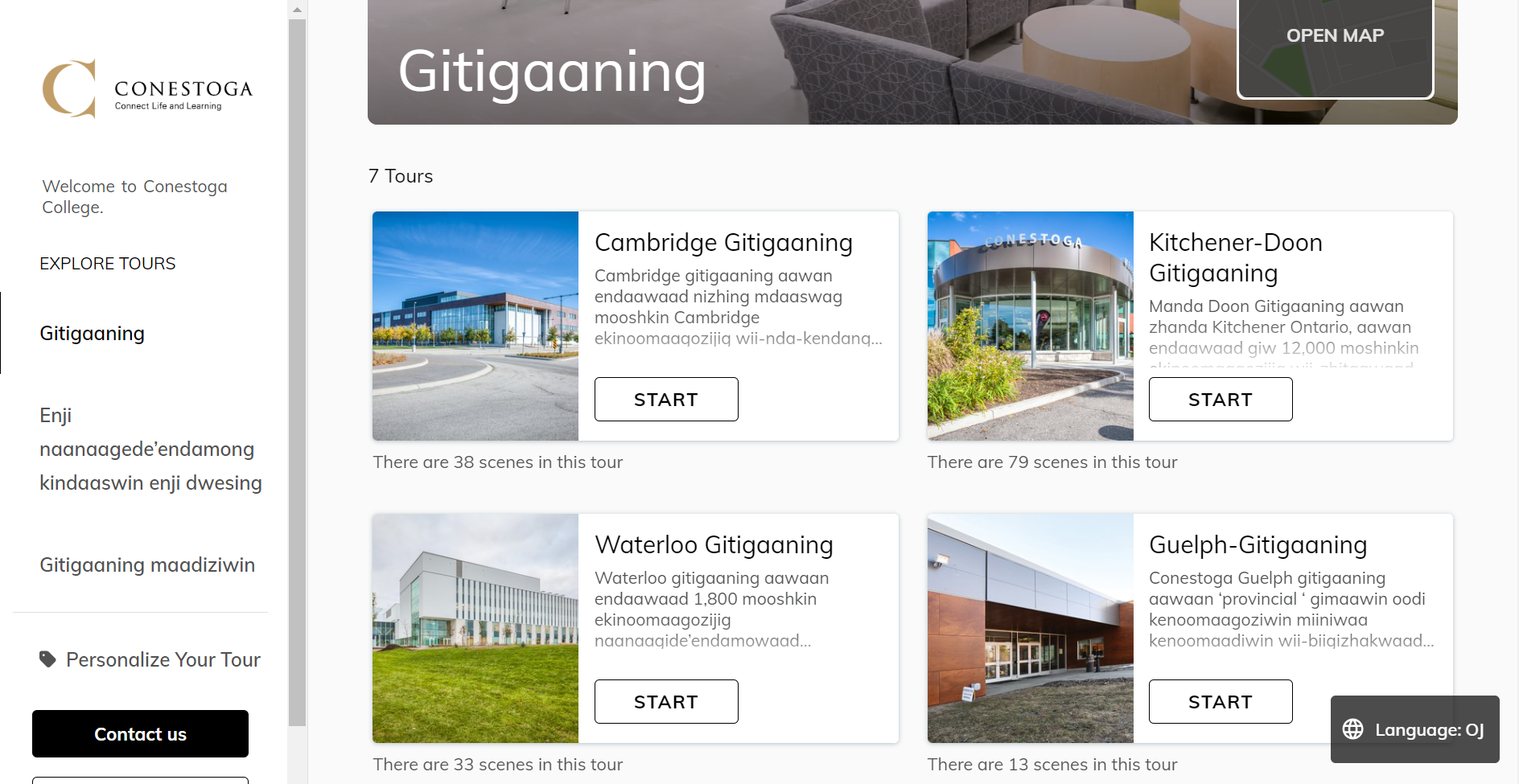Virtual tours of Conestoga campuses are now available in the Indigenous language of Anishinaabemowin, considered an endangered language because it is no longer the primary language spoken by Anishinaabek children.

Virtual tours of Conestoga campuses are now available in the Indigenous language of Anishinaabemowin.
With only 0.7 per cent of the total population being fluent in Anishinaabemowin, this resource serves as a vital connection between past, present and future generations of language speakers.
Conestoga's Indigenous marketing co-ordinator Ian Maracle is thrilled to see the translation finally launched after a year of work on the project.
"It's just really cool to see that language all there in all its glory," Maracle said. "It is really empowering for Indigenous Peoples of the area."
The representation of Indigenous culture on the college's website is a "jewel in the crown" and a testament to the college's commitment to creating a safe and welcoming space for Indigenous students, Maracle said. "It is excellent. It is really exciting to see the college embrace this."
Translating the entire tour was a big task. Anishinaabemowin is an interpretive language to some extent, which means there can be numerous ways to approach a single word. The translation was undertaken by Elder Dr. Shirley Ida Williams, who is Bird Clan from the Ojibway and Odawa Nation. Identified by former Gov. Gen. Adrienne Clarkson as a Role Model for Survivors, Dr. Williams is Professor Emerita at Trent University in Peterborough, where she has taught and researched the Anishinaabe language since 1986.
Dr. Williams is a long-time teacher of and advocate for Anishinaabe language and culture. A survivor of Canada’s residential school system, Dr. Williams vowed to always make learning inspirational and fun for her students.
"It was quite a thorough process to get it done," Maracle said.
Although it’s often an uphill journey to create these types of resources, Danielle Boissoneau, Director of Indigenous Initiatives, emphasized how important it is to do this work. “When institutions like Conestoga College create these types of tools, we are signalling that this work is important to us too. When we rely on Indigenous-led education, we can actively reclaim space with confidence and support for Indigenous students.”
Maracle would like to next translate the tours into Mohawk, which is most prominent among Haudenosaunee with many resources and fluent speakers.
"We’ll have representation of both Haudenosaunee and Anishinaabek nations from the territory at the college, which I think is really, really important,” Maracle said.
The virtual tour in Anishinaabemowin is available through the college’s website.
Conestoga is committed to increasing Indigenous learners’ access to and success in post-secondary education and closing the participation and achievement gap. The college's response to the Truth and Reconciliation Commission of Canada's Calls to Action continues through ongoing emphasis on improving education and attainment levels and success rates of Indigenous learners.
Developing culturally appropriate curricula, including the teaching of Indigenous languages, as well as offering a range of programming, services and research opportunities that promote Indigenous ways of knowing and reconciliation remain a priority.
To learn more and access resources, visit Indigenous initiatives.
